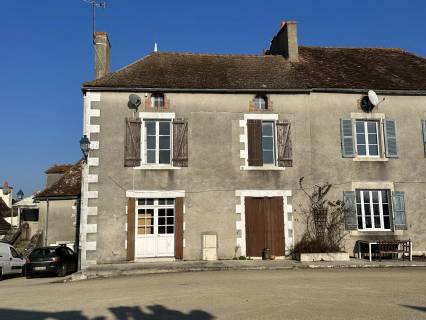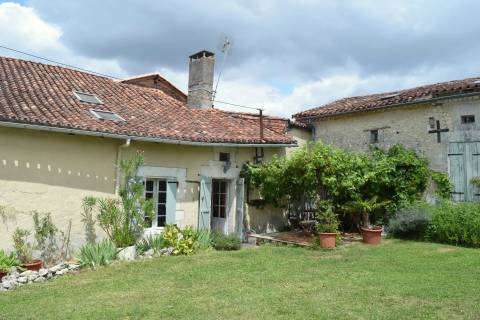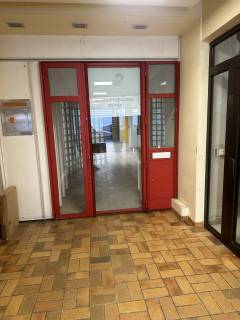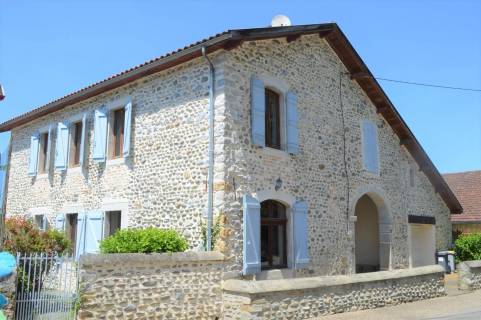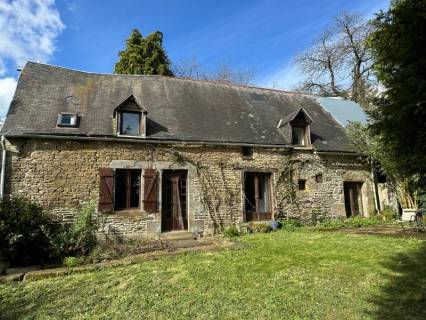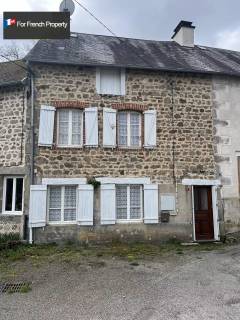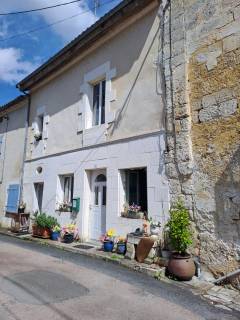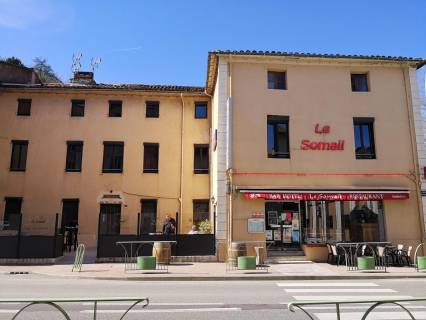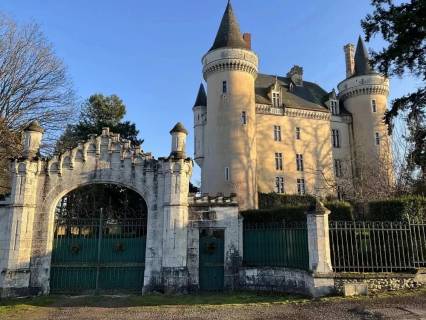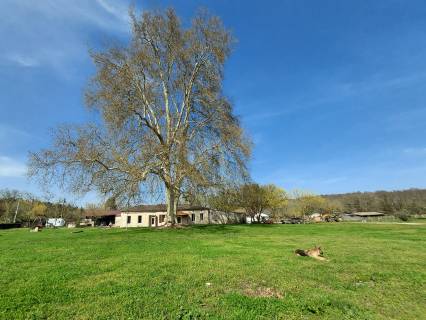Nov 212018
These four rural departments make up the northern part of the Midi-Pyrénées region, in south-western France. Together they boast diverse and unspoilt scenery, vibrant medieval towns, fascinating caves and grottos, and some of France’s most beautiful and most visited villages and cities.
Tarn
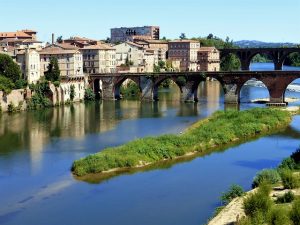
Albi
Named after the river, Tarn enjoys varied and unspoilt scenery, and several interesting and vibrant medieval towns. For those who love the great outdoors, Tarn offers river valleys, dramatic gorges and forested mountains, with walking trails, cycle routes, horse-riding and fishing.
Its prefecture, Albi, is widely considered one of France’s most beautiful cities and was the birthplace of post-impressionist artist Toulouse-Lautrec, in 1864.
Highlights include:
- Vieil-Alby, the ancient centre of the Albi and a UNESCO World Heritage Site, with half-timbered houses and its red brick cathedral, claimed to be the largest brick building in the world
- the Toulouse-Lautrec museum in Albi, which hosts the world’s most important public collection of the artist’s works, located in the Berbie Palace, one of the oldest castles in France
- Gaillac, south-east of Albi, a picturesque red-brick city, famous for its wine
- Castres and its houses overhanging the Agoût River, also home to the Goya and Jean Jaures museums
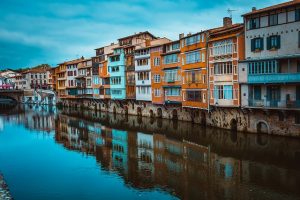
Castres
- Graulhet with its 13th century bridge, and the medieval district of Panessac
- Lavaur and its St Alain Cathedral, a national monument dating from the 13th century
- Cordes-sur-Ciel, a popular medieval town famous for its Gothic houses, well-preserved bastide and narrow streets
- The villages of Monesties, Puycelsi and Castelnau-de-Montmiral, all members of the Les Plus Beaux Villages de France association
- the Regional Natural Park of the Haut-Languedoc, ideal for hiking and mountain-biking
Stone-built properties are typical in Tarn, along with half-timbered or colombage houses. In the countryside, elegant farmhouses, vigneron houses and other agricultural buildings are common, and there are plenty of châteaux and pigeonniers.
View Properties For Sale in Tarn
Tarn-et-Garonne
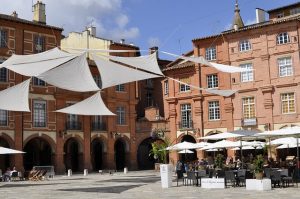
Montauban
Traversed by the Rivers Tarn and Garonne, this department was created in 1808 by Napoléon Bonaparte and is among France’s smallest, yet it offers surprisingly diverse scenery. This includes the foothills of the Massif Central, dramatic gorges of the River Aveyron in the north-east, and rolling hills in the south-west.
The departmental prefecture is Montauban, which lies in a fertile plain, watered by the Tarn and Garonne rivers and is renowned for its fruit growing.
Highlights include:
- the attractive red brick bastide city of Montauban
- the Two Seas Canal, which comprises the famous Midi canal between Toulouse and Sète and the Garonne canal between Toulouse and Bordeaux
- the 7th century Abbey at Moissac, considered one of the most beautiful architectural monuments in France, and a visiting point for pilgrims on the Saint-Jacques de Compostelle Pilgrims’ Way
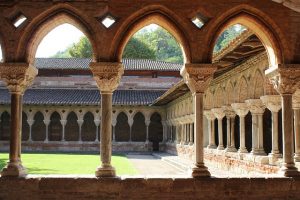
Moissac Abbey
- the 12th century village of Lauzerte, with its Romanesque chapel, arcades and medieval houses with 13th and 15th century facades
- Auvillar, overlooking the river Garonne, renowned for its circular town hall dating from 1825, its clock tower and church
- the picturesque mediaeval fortified village of Bruniquel, with medieval gateways, steep cobbled paths and old stone buildings
- Saint-Antonin-Noble-Val, with its medieval market hall and the 12th century town hall, the oldest civil building in France
- the Grotte du Bosc in Saint-Antonin-Noble-Val, discovered in 1936, with limestone formations, and a museum of mineralogy and prehistory
- the Aveyron Gorges, perfect for nature lovers with canoeing, rambling and rock
- climbing, and a rich variety of flora and fauna
Properties in Tarn-et-Garonne include stone Bas-Quercy houses, with stone cellars, courtyards and pigeonniers, and rustic stone houses with wood beams, large and luminous rooms, sometimes separated by archways.
View Properties For Sale in Tarn-et-Garonne
Lot
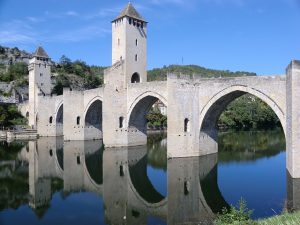
Cahors
Named after the Lot River, this is the most northerly department of the Midi-Pyrénées and enjoys varied and attractive scenery, including rolling hills, rivers, dramatic cliffs, hilltop villages, unspoilt woodlands and sunflower meadows, as well as some of France’s most visited underground caves and grottos.
Its prefecture is the medieval cathedral city of Cahors, which lies in a wide loop of the Lot River and is famous for its bridge, the Pont Valentre.
Highlights include:
- Cahors, known internationally for its wine
- Figeac, a substantial medieval town dating in part from the 9th century, with many houses and small palaces dating from the 13th – 16th centuries
- Gourdon, a medieval hilltop town made of honey-coloured stone, with a well preserved historical centre
- the village of Rocamadour, one of the most visited villages in France, due to its location on a cliff edge, its ramparts, and its seven religious sanctuaries
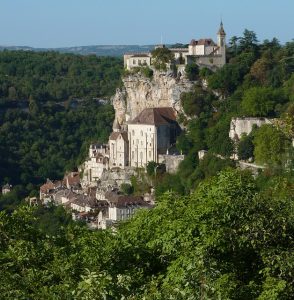
Rocamadour
- the town of Martel, with seven medieval towers, and houses with interesting architectural details such as ornate doorways, mullioned windows and stone staircases
- the pretty village of Puy-l’Eveque, located on a steep slope above the river, with narrow lanes and small courtyards, fountains, towers and traditional raised balconies
- several lovely villages including Autoire, Carennac and Loubressac
- Gouffre de Padirac, the most visited cave system in France, containing an underground river and huge cavern
- the prehistoric painted caves of the Grottes de Cougnac, featuring extensive rock formations and the oldest prehistoric paintings of animals that are open to the public
- the Natural Regional Park of the Causses de Quercy, the highlights of which are the cliff top village of Saint-Cirq-Lapopie, a popular tourist destination
Property styles include Quercy houses, found around Cahors and in the higher Quercy area, which are made of clay. They are rectangular and usually include shed dormers, covered terraces and a pigeonnier.
Many houses were built using limestone and yellow sandstone, some of which may still be exposed inside. Some roofs were built using ancient Provençal tiles, and in many properties the tower is a part of the house. There are also half-timbered properties.
View Properties For Sale in Lot
Aveyron
Part of the southern Massif Central, this department is the fifth largest in France, and enjoys varied and beautiful scenery, from flower-studded moors and rugged plateaux to rolling hills and dramatic river valleys.It also boasts no fewer than ten villages belonging to the Les Plus Beaux Villages de France association – more so than any other department. Most are unspoilt and medieval, and some fall within the Via Podiensis GR65 pilgrim route to Saint Jacques de Compostelle, which crosses the department.
Aveyron has a healthy tradition of handicrafts, and is home to the famous Couteau de Laguiole knife, with its distinctive slim styling and bee emblem. Its most famous delicacy is Roquefort cheese, produced in the village of the same name.
Its prefecture is Rodez, with museums, a rich historical centre, parks and an aquatic centre.
Highlights include:
- Rodez, with its historic centre dating from the 15th century built around the Gothic cathedral
- the castle of Najac, a medieval ruin perched upon a hill
- the Millau viaduct, designed by architect Norman Foster and the highest road bridge in Europe, opened in 2004
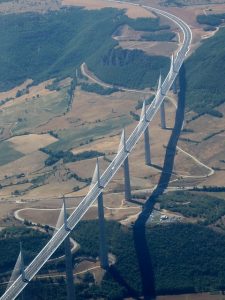
Millau Viaduct
- the Circuit du Larzac Templier et Hospitalier, an 85 km route taking in the long and fascinating history of the Knights Templar
- The ten plus beaux villages de France: Belcastel, with its 15th century castle, Brousse-le-Château, with an 11th century fortress, La Couvertoirade, known as the jewel of the Larzac, Conques, a major stop on the Chemin de Saint-Jacques-de-Compostelle, Estaing, with several medieval buildings, Najac, a medieval village, Peyre, with stone houses and a troglodyte church, Saint-Côme-d’Olt, an unchanged medieval village, Sainte-Eulalie-d’Olt, with traditional pebble-built houses, and Sauveterre-de-Rouergue, built around a large, arcaded square.
- the bastide town of Villefranche-de-Rouergue with its medieval centre
- the GR65 footpath and part of the pilgrim route for Saint Jacques de Compostelle
- the Causses limestone plateaux and the Cévennes valleys, inscribed on UNESCO’s World Heritage List
- the Lacs du Lévézou, five artificial lakes that offer opportunities for nautical sports, horse-riding, hiking and camping
The architecture in Aveyron is as varied as its landscape, and this is a popular area for second homes. Buildings on the higher plateaux have steeply pitched roofs covered with split stones, or lauzes. In the west, farmhouses have tiled roofs and external stone staircases leading to covered balconies or bolets. The colour of the stone ranges from creamy white to dark honey to umber red around Rodez.


